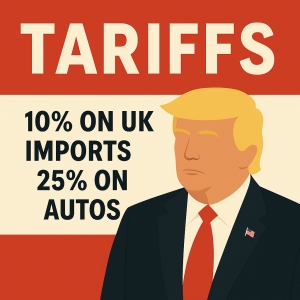When news broke that Universal Studios plans to build its first European theme park in Bedfordshire, the headlines rightly focused on tourism, job creation, and economic growth. But behind the magic of blockbuster rides and immersive experiences lies something less glamorous yet absolutely vital: data cabling infrastructure.
The Real Infrastructure Behind the Attractions
While rollercoasters steal the limelight, none of it functions without the right network. From ticketing systems and ride control networks to on-site Wi-Fi, security, and smart crowd flow management, robust data cabling is the hidden powerhouse that will help bring this £50 billion economic boost to life.
A development of this scale needs more than just fibre—it needs future-proofed network cabling that can support:
- Real-time ride monitoring and safety systems
- Contactless payments and mobile app integration
- High-definition CCTV and facial recognition for security
- IoT-based maintenance systems for predictive servicing
- Guest Wi-Fi and connectivity across hundreds of acres
It’s no exaggeration to say that CAT6A, CAT7, and fibre optic cables are as crucial to this resort as concrete and steel.
Smart Resorts Need Smart Infrastructure
Universal has already set the tone for smart entertainment in its parks around the world. Bedfordshire will be no exception. Expect advanced queue management systems, AR/VR integration, and smart hotel room controls—all reliant on seamless data transmission.
This brings data cabling to the forefront of not only the construction phase but ongoing operations. As the park evolves, so too must its infrastructure. Designing for flexibility—trunking routes, server room capacity, and zoned cabling—will ensure the site is ready for tech upgrades long after opening day in 2031.
Opportunities for the UK Data Cabling Sector
The Bedford resort isn't just a win for entertainment—it's a massive opportunity for UK data cabling specialists. With 8,000 permanent roles anticipated and tens of thousands of workers during the build, the demand for high-quality M&E contractors and network cabling engineers will spike.
This project could lead to:
- Large-scale commercial cabling contracts
- Specialist work in fibre optics and AV integration
- Upskilling of local engineers and apprentices
- Supply chain boosts across the electrical and comms sectors
If done right, Universal Bedford could become a showcase of UK engineering excellence—from the rides to the rack cabinets.
A Call for Standards and Excellence
With high visitor numbers and safety-critical systems, there's no room for shortcuts. Universal will likely demand:
- Adherence to BS EN 50173 and ISO/IEC 11801 standards
- Thorough cable testing and certification
- Use of LSZH (Low Smoke Zero Halogen) sheathing for safety
- Detailed as-built documentation and labelling
This is a chance for British firms to step up and deliver to the gold standard.
Conclusion: A Foundation Built on Connectivity
Universal Studios Bedford promises to be a landmark development for the UK. But behind the visitor experience lies a complex technical ecosystem—one that depends on high-quality, future-ready data cabling.
For contractors and suppliers in this space, the project offers not just commercial potential, but a chance to contribute to a major national infrastructure build.
Automotive Targeted – But Not in Isolation
It’s been confirmed: the 25% US tariff is specifically aimed at UK-made vehicles, including cars and light trucks.
But there’s more to the story:
- All UK goods entering the US now face a 10% blanket tariff
- Steel and aluminium products — common in containment systems — are also hit with 25% tariffs
- While data cabling itself hasn’t been directly targeted, components within cabling systems and support structures may be affected by rising material costs or changes in supplier priorities
The Role of Data Cabling in Manufacturing — And What’s at Risk
Data cabling plays a pivotal role in manufacturing environments, supporting:
- Machine-to-machine communication and control
- Industrial networking and real-time monitoring
- IoT integration and automation systems
- Power-over-Ethernet for security, access control, and surveillance
As large manufacturers reassess capital expenditure in light of lost export margin, don’t be surprised if some infrastructure upgrades are delayed or rephased — especially where the works are considered enhancements rather than essentials.
What’s Likely to Rise — and Why?
With shifting costs and disrupted supply chains, some price increases are possible — mainly driven by raw material inputs and production adjustments.
What May Rise:
- Steel or aluminium-based containment systems, trays, and brackets
- Bespoke or heavy-duty cable assemblies that include metallic or imported components
- Fixings, enclosures, and accessories where raw input prices are globally indexed
What’s Likely to Stay Stable:
- Standard copper and fibre cabling
- Mainstream accessories and connectors
- Products with strong EU/global competition (where pricing pressure remains)
In some cases, manufacturers may absorb small increases to protect UK market share — but on specialist or metal-intensive items, slight price lifts should be expected.
What Contractors & Consultants Should Do
- Focus on Active Sectors
Prioritise logistics, healthcare, data centres, and other resilient markets — these remain investment-positive.
2. Support Spec Reviews
If a product becomes unavailable or costlier, help clients navigate workable, quality alternatives — especially around containment and accessories.
3. Watch the Manufacturing Sector Closely
Internal projects may stall while export-heavy firms pause and re-plan. But not everything stops — anything tied to uptime, compliance, or safety still moves.
Final Word: Focus, Not Fear
Yes — the 2025 tariffs will reshape some priorities. But the UK's cabling and infrastructure work doesn’t vanish. It shifts. Projects may be delayed, not cancelled. Manufacturers may pause, but logistics, healthcare, energy and data centre sectors continue to invest heavily.
And importantly — let’s not forget — the data cabling industry itself is booming. Demand is being driven by cloud expansion, AI infrastructure, smart warehousing, edge computing, and the ongoing digitisation of everything from hospitals to transport hubs. The backbone of all that? Structured cabling, connectivity, and containment.
So while some sectors recalibrate, others are ramping up — creating plenty of opportunity for those ready to move with the market.
Stay agile. Stay informed. Stay client-focused. That’s how contractors, consultants and suppliers can not only weather this shift — but come out stronger on the other side.




